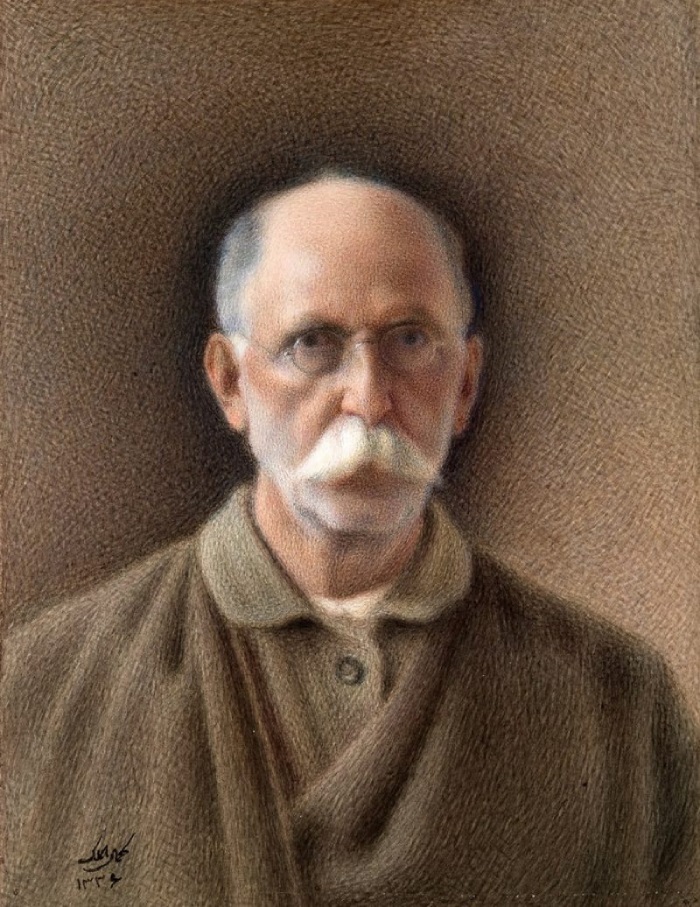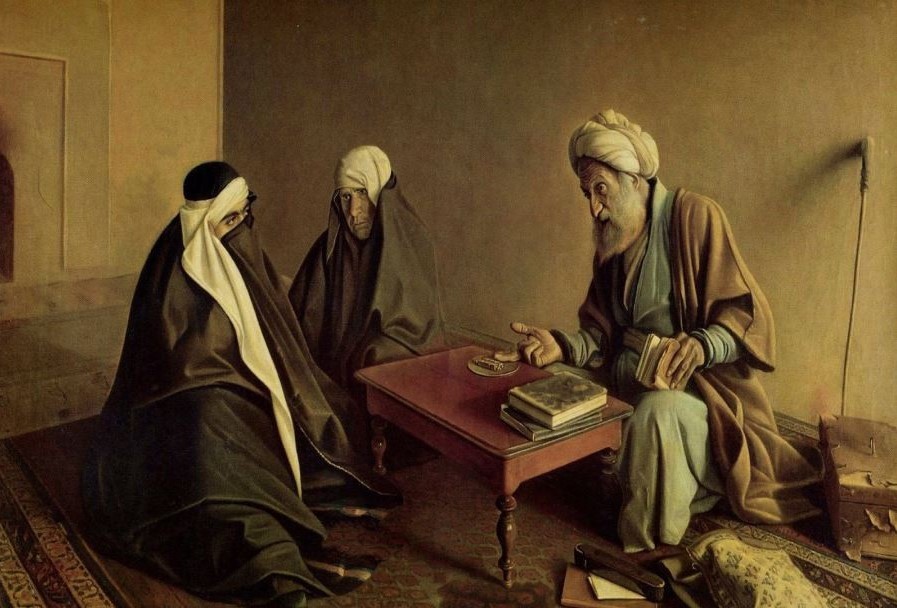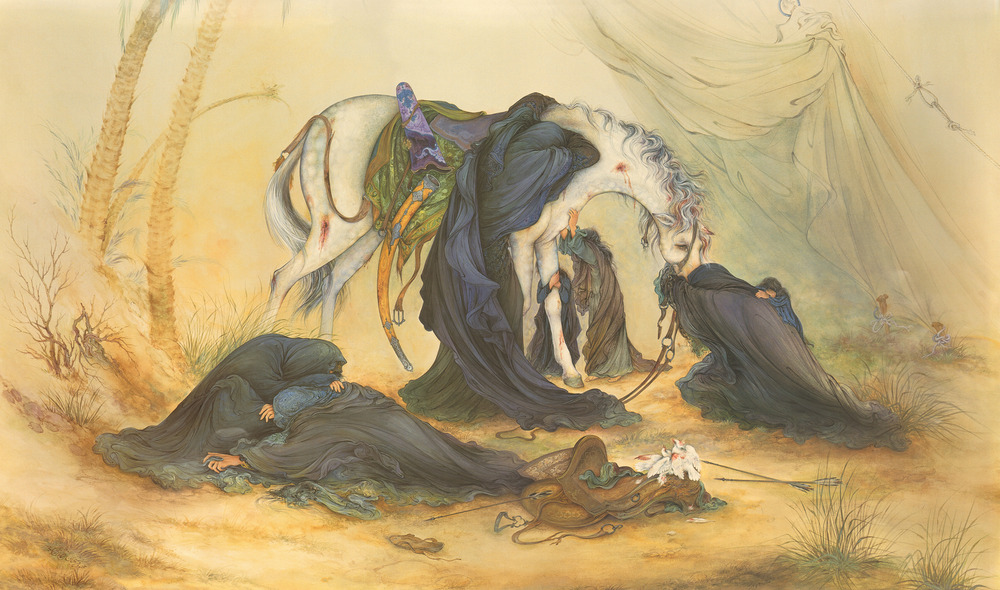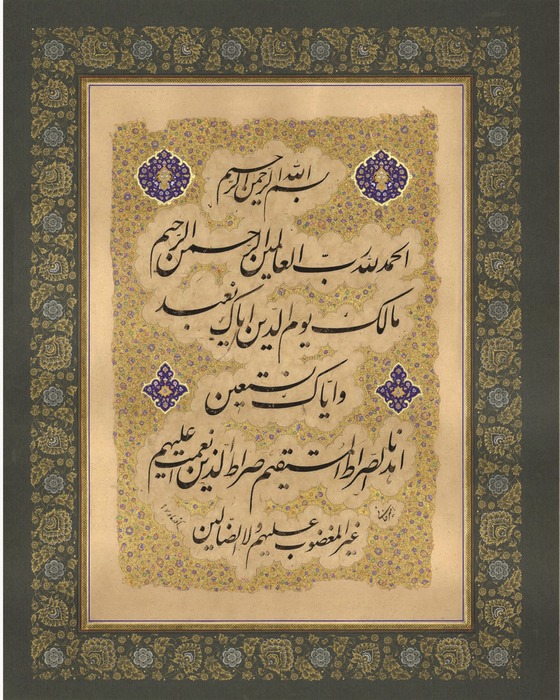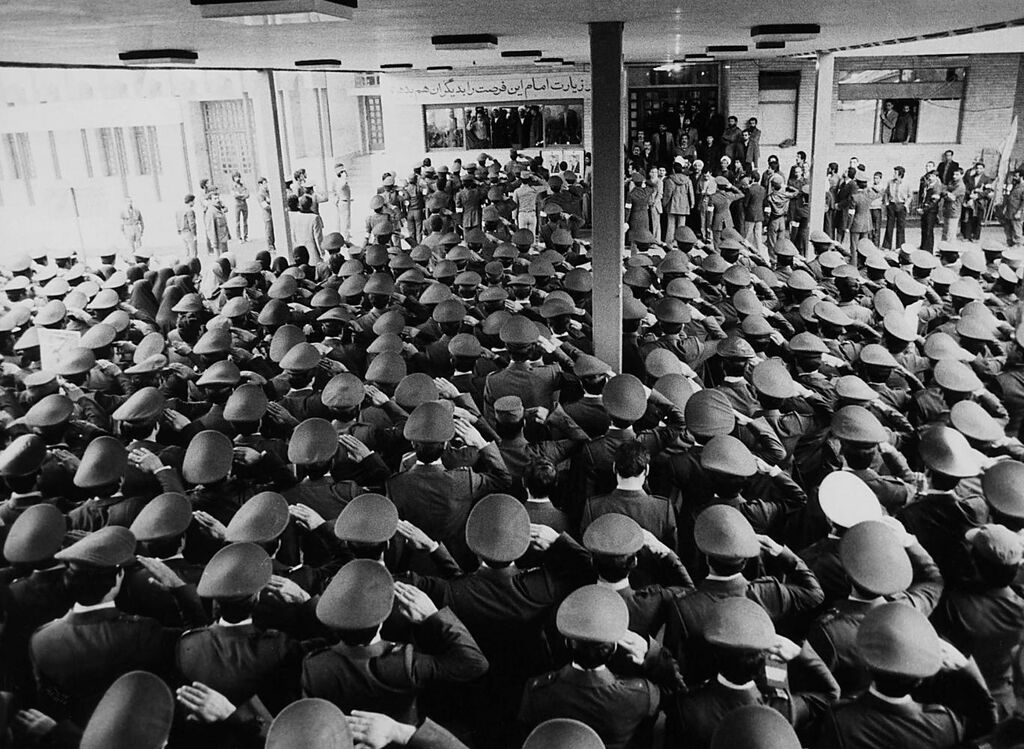Around the year 1914 (1293 AH), due to the low wages, Hossein Behzad decided to leave Mirza Hassan Peykar-negar’s workshop and rent a small studio in Haji Rahim Khan Caravanserai, located in the Tobacco Sellers’ Bazaar near Sabzeh Meydan. At that time, paintings in the style of Kamal-od-Din Behzad and Reza Abbasi were very highly popular among art collectors, so Behzad began reproducing and reinterpreting the works of these great Iranian miniature masters in his own studio. He worked around eighteen hours a day and earned between seven and ten tomans daily. Through the sale of his paintings, he was finally able to free himself from poverty to some extent.
Before family names became officially recognized in Iran, Behzad was known as “Hossein Agha the Painter.” During this period, due to his deep admiration for Persian miniature art and particularly for the works of Kamal-od-Din Behzad, he adopted “Behzad” as his surname. Before him, another renowned designer and painter of the time, Hossein Taherzadeh, had also added the name “Behzad” to his surname. However, later on, to avoid confusion with another famous miniaturist also named Hossein Behzad, he changed his surname to “Behzad Miniator” (Behzad the Miniaturist).
Around 1916 (1295 Solar Hijri), Behzad moved his studio from his first chamber to an upper room in Shams-ol-Emareh, where he continued his artistic pursuits. It was there that his friendship with the poet Mirzadeh Eshghi began and lasted for years. During this time, Behzad’s reproductions (roznagari) of the works of celebrated Persian painters—especially Kamal-od-Din Behzad and Reza Abbasi—gained great popularity. Some researchers believe that his reproductions were so meticulously executed and faithful to the originals that it was nearly impossible to distinguish them from authentic works. As a result, many of these paintings were purchased by Orientalists and major museums and are now preserved in the collections of national and international art museums all around the world.
Traditional School (Maktabkhaneh), by Master Hossein Behzad
Hossein Behzad’s Artistic Style and Vision
Hossein Behzad considered miniature painting as “poetry in painting” and the highest form of ghazal, placing it above ordinary painting. From his perspective, the task of the miniature artist is to capture and convey the sweetness of life. While a painter merely represents nature with various elements, the miniature artist discovers beauty and presents it in its most exquisite form. In other words, the miniature artist elevates beauty to perfection and, at its peak, gives it a tangible form. With this approach, Behzad named his distinctive style “Ghazal Painting” and acknowledged that his brush sometimes lagged behind his thoughts, compelling him to create multiple sketches before choosing the final composition. He also occasionally referred to his method as “Poetic Painting”, explaining: “The miniature artist, like a painter, must consider the spirit of the age and belong to his era. Like a poet, he must weave the motifs with such harmony and skill that they please both the heart and the eye.” For Behzad, content and meaning always precede form and appearance. First, the idea sparks in the artist’s mind, remaining there until it finds the proper shape and form—the moment he considers the birth of an artwork. In creating much of his work up to middle age, Behzad was influenced by the miniature schools of Herat and the Safavid era, particularly drawing inspiration from the masters Kamal-ud-Din Behzad and Reza Abbasi, whom he meticulously studied and replicated. However, upon becoming one of the leading figures in Iranian miniature painting, he believed that an artist should not merely follow a specific style or set of rules, as adherence could constrain artistic freedom, whereas true art knows no bounds.
Classification of Behzad’s Works
The works of Master Hossein Behzad can be categorized into three main groups according to the level of the artist’s creative expression:
- Early Works (Ages 12–17):
-
- Created primarily for earning a livelihood.
- Rarely accessible today.
- These works show no distinctive or unique artistic style.
- Old Works (Emerging Artistic Phase):
-
- Gradually gained artistic qualities, establishing Behzad among the leading miniaturists of his era.
- During this period, coinciding with his professional independence, Behzad became well acquainted with the miniature schools of Herat and Isfahan.
- He skillfully reproduced works of renowned painters such as Kamal-ud-Din Behzad and Reza Abbasi, often for antique dealers.
- Later Works (Post-Paris Trip and Exposure to International Styles):
-
- Created after his first visit to Paris, influenced by prominent Iranian and global painters.
- These works reflect a more personal, innovative style in composition, subject matter, and color.
Some researchers merge the first two categories and divide Behzad’s works into two broader groups:
A) Traditional Paintings:
- Created entirely in the classical Iranian style, following the methods of Herat and Isfahan miniaturists.
B) Innovative Paintings:
- Reflect Behzad’s new style, showing transformations in subject matter, composition, and color.
- Subjects are often inspired by literary and mystical texts.
- Behzad typically uses two or three colors in a masterful, harmonious combination.
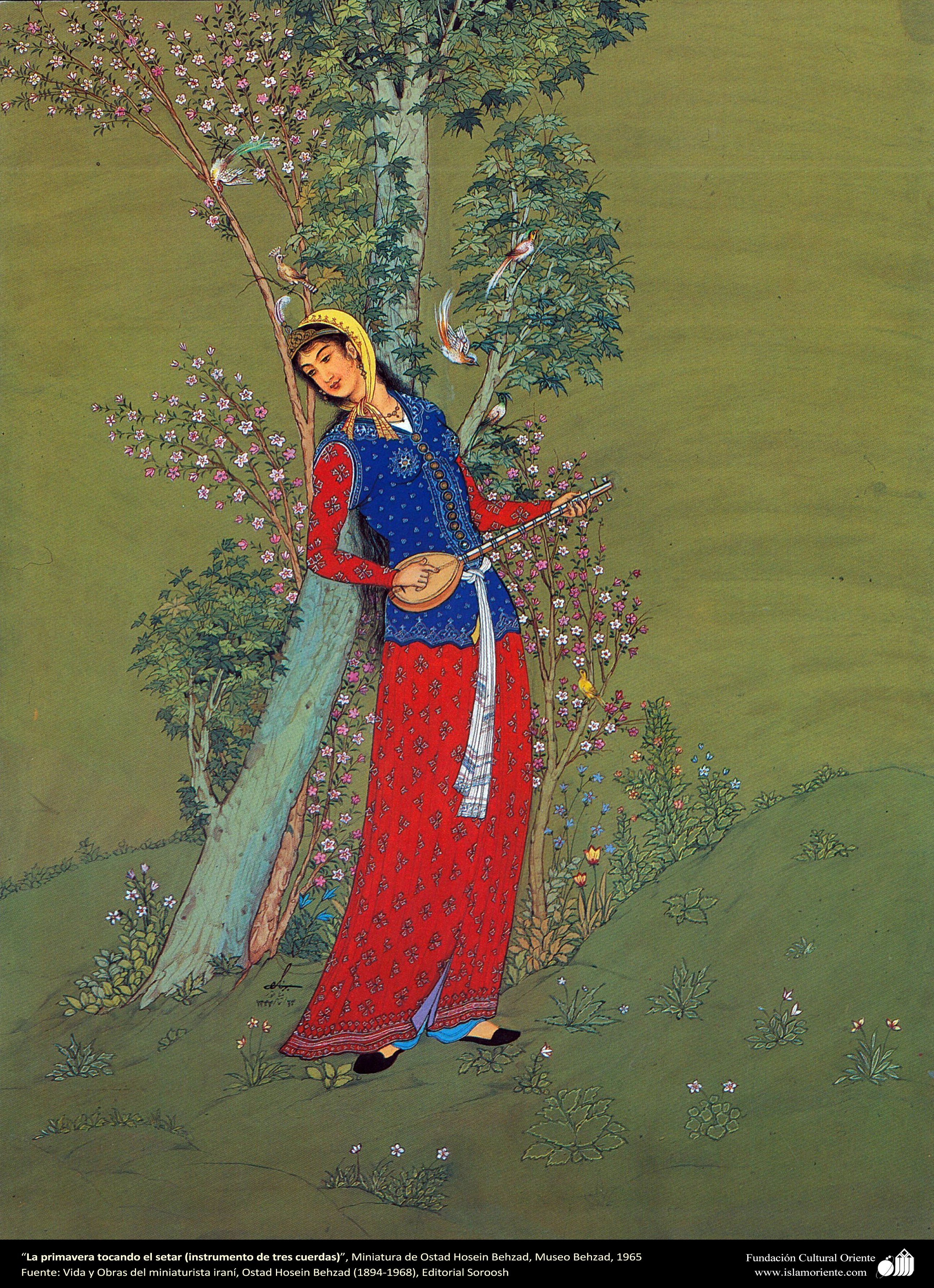
Spring and the Setar, by Master Hossein Behzad
Exhibitions of Works
As Behzad gradually advanced in his art and gained fame in contemporary Iranian miniature painting, he moved away from mere copying of past works and developed his own distinctive style. Through numerous exhibitions of his works in Iran and abroad, a wide audience of artists and art enthusiasts became acquainted with his creations. In 1324 AH, Behzad, along with a group of other artists, showcased his works at the Fine Arts Exhibition. However, his first major solo exhibition, titled “Behzad’s Booth”, was held in Ordibehesht 1333 AH (coinciding with the Avicenna Millennium Festival, attended by scholars, orientalists, and renowned artists from 64 countries) at the lecture hall of the Iran Bastan Museum. About 30 of his paintings were displayed, including notable works such as “Ferdowsi” and “Iwan-e Mada’in.” The exceptional reception by visitors significantly increased Behzad’s international reputation, leading representatives from countries including France, Italy, Czechoslovakia, and Poland to request exhibitions of his works in their own countries. Thus, Behzad became one of the first Iranian miniature painters to have solo exhibitions abroad. In 1334 AH, the Iran-France Cultural Association invited him to exhibit his works at the Musée d’Art Moderne in Paris. This exhibition featured a selection of Behzad’s works and was attended by the Iranian ambassador to France, the French Minister of Culture, and notable figures such as French orientalist Henri Massé and Jean David Weil, then head of the Islamic Art Department at the Louvre Museum. In Aban 1334 AH, 16 of Behzad’s works were also displayed at the Iran-Germany Cultural Association. His international exhibitions continued in cities such as Prague, Warsaw, Washington, New York, and Brussels, as well as in countries like India and Japan, further cementing his global artistic influence.
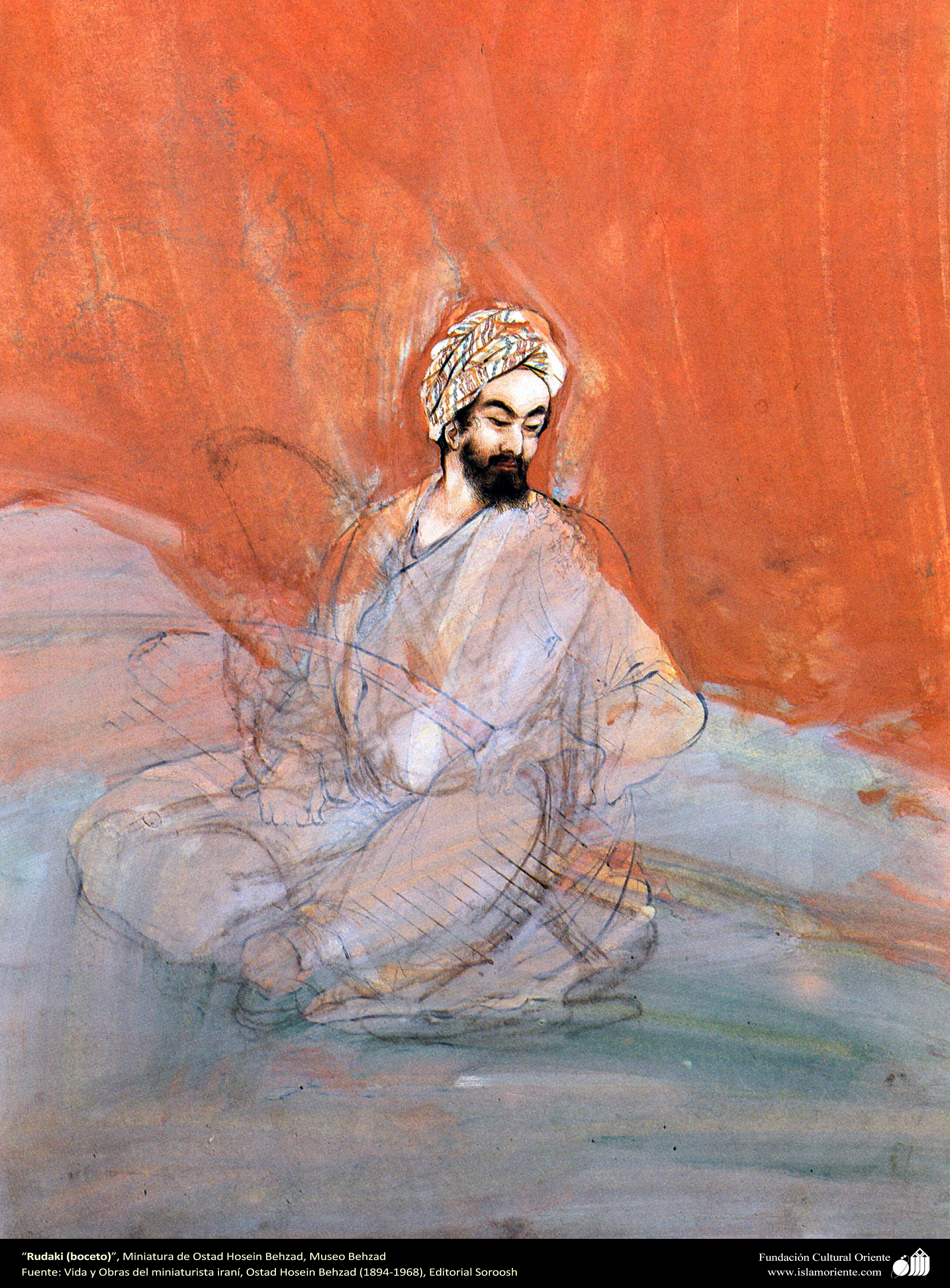
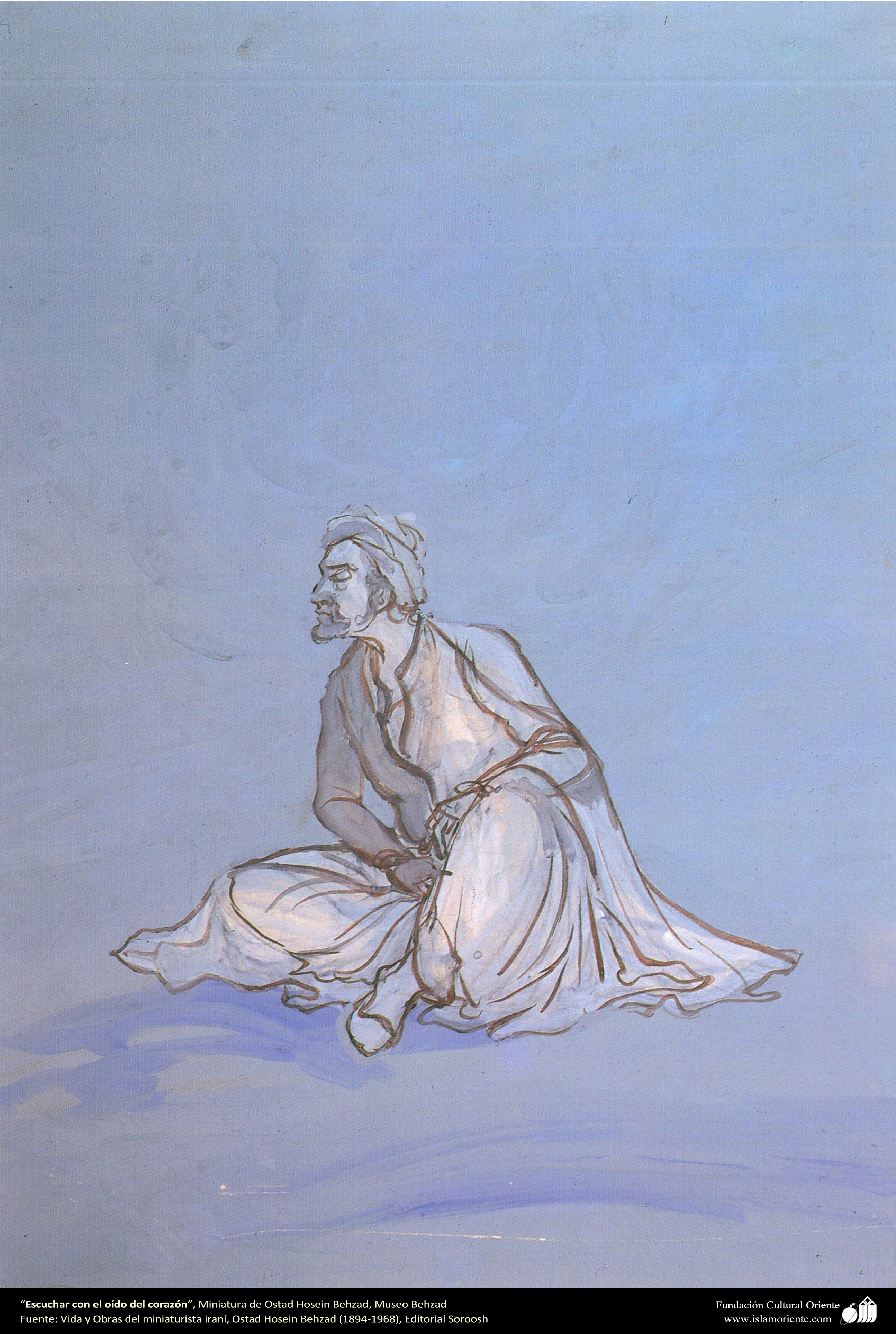
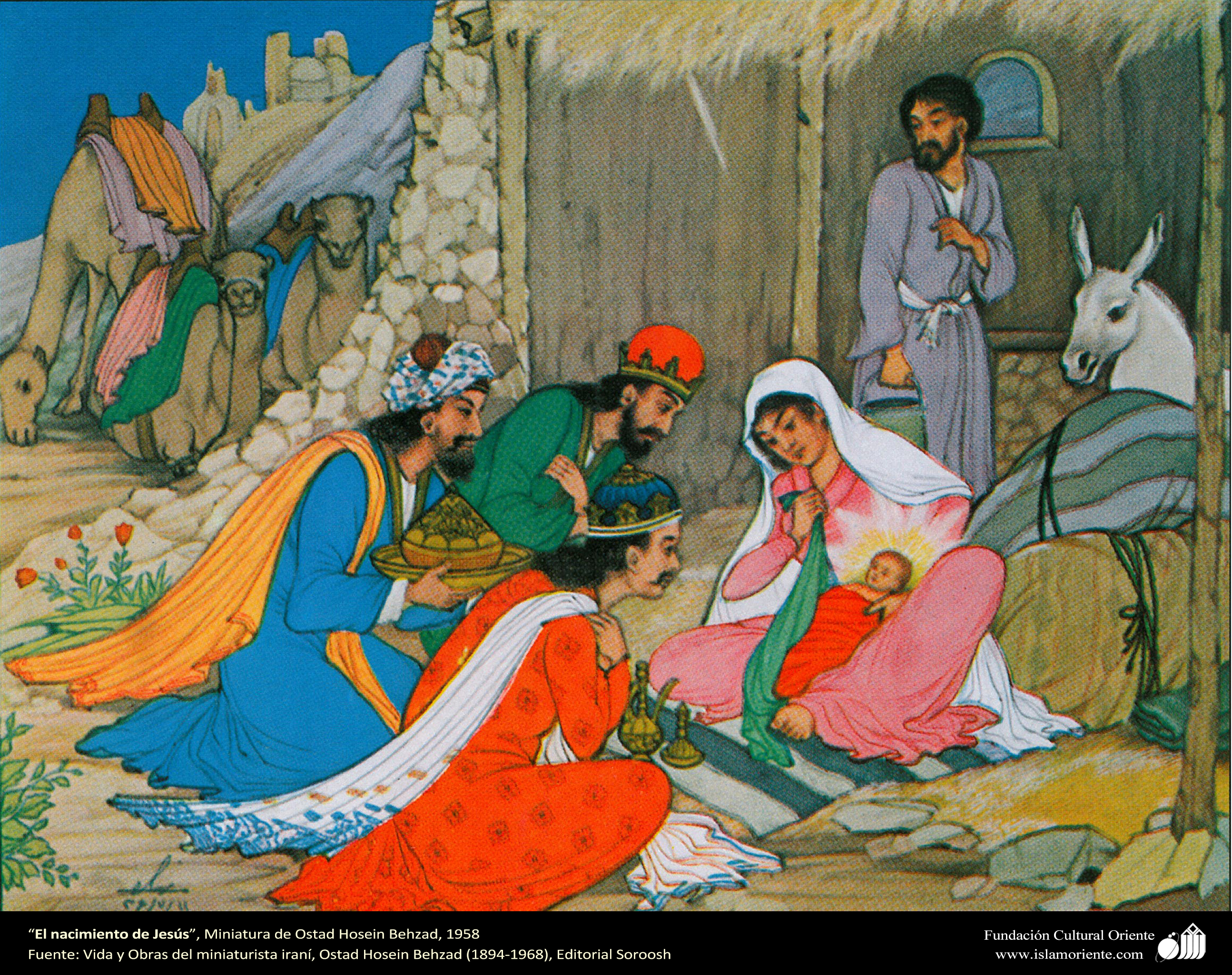
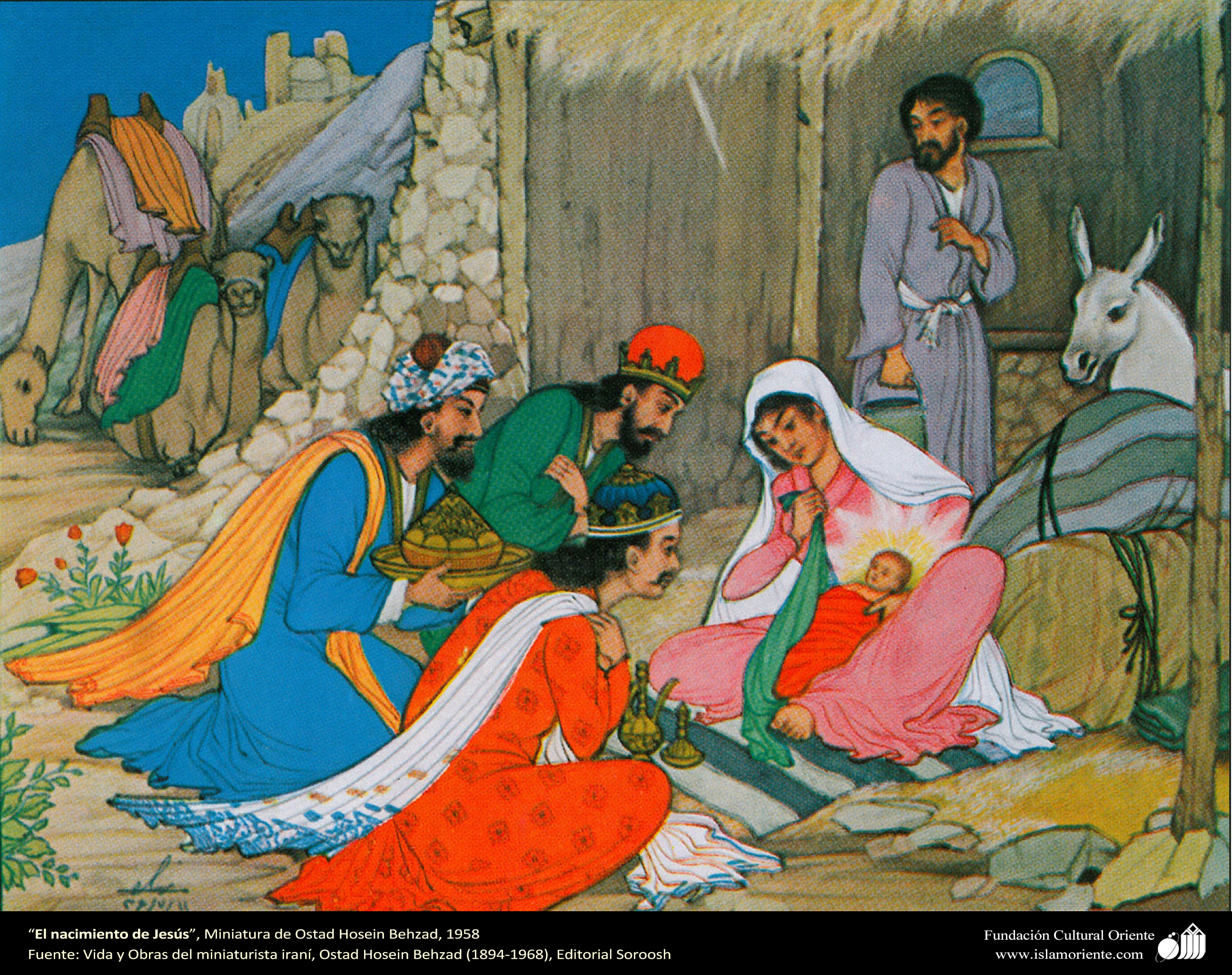
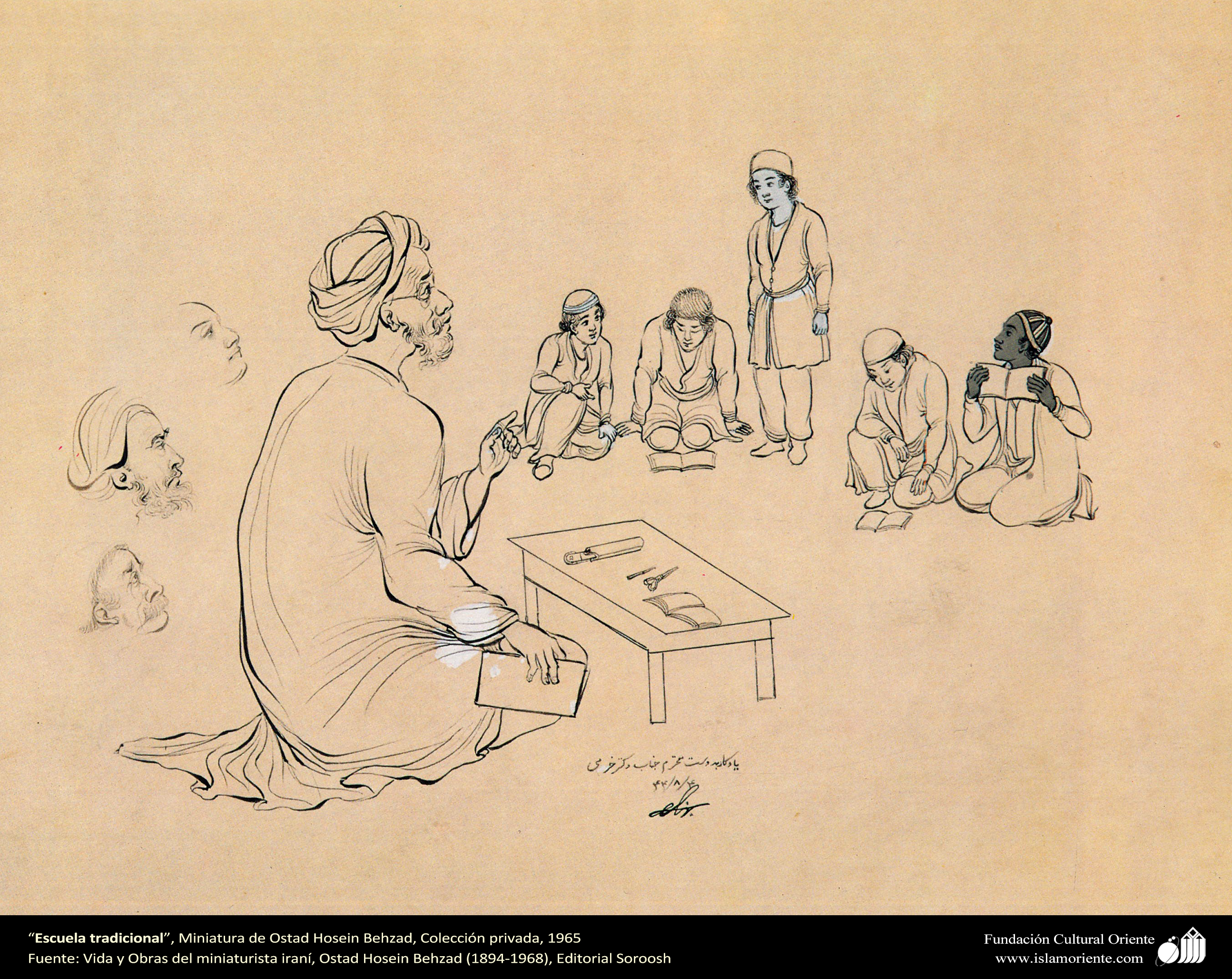



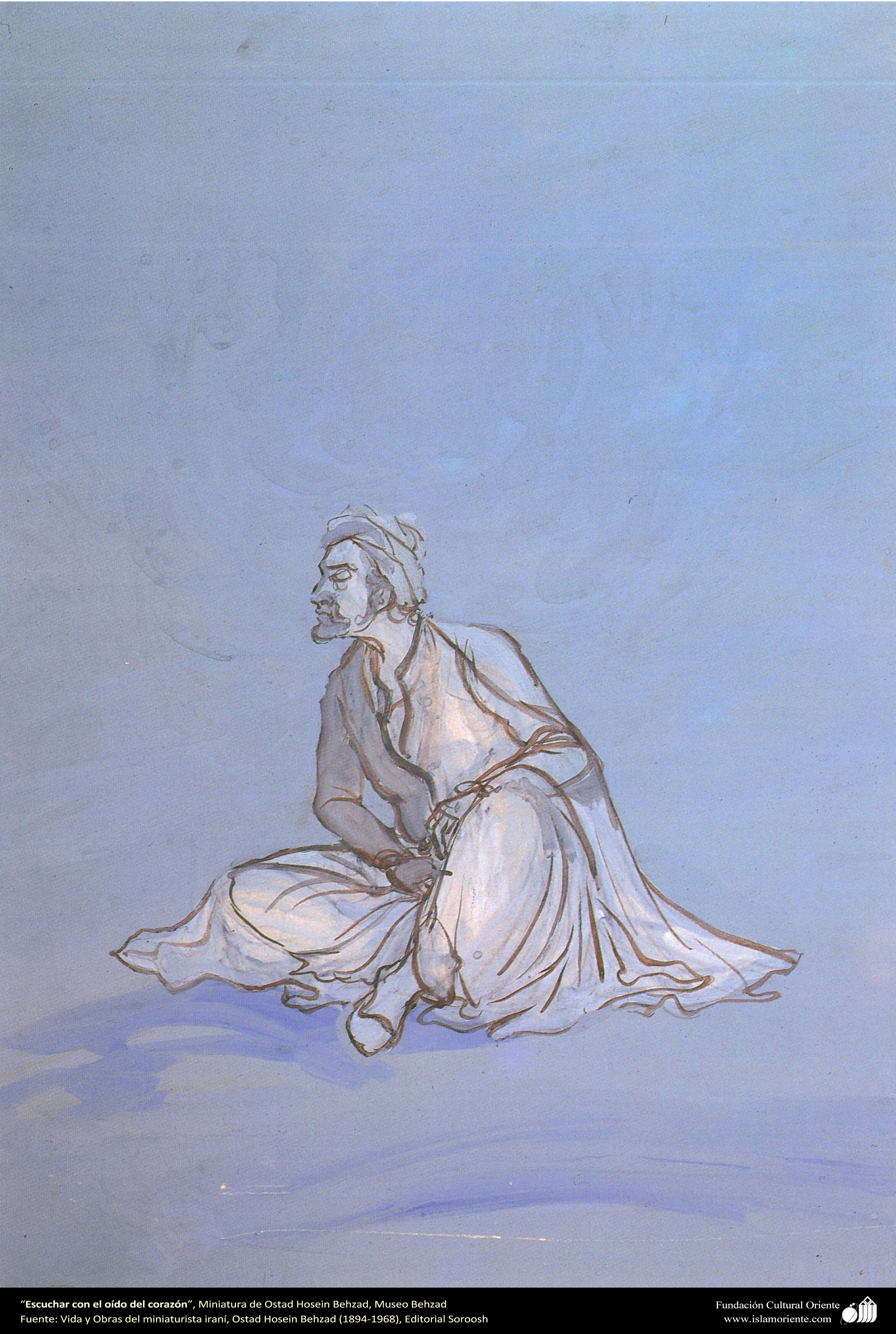
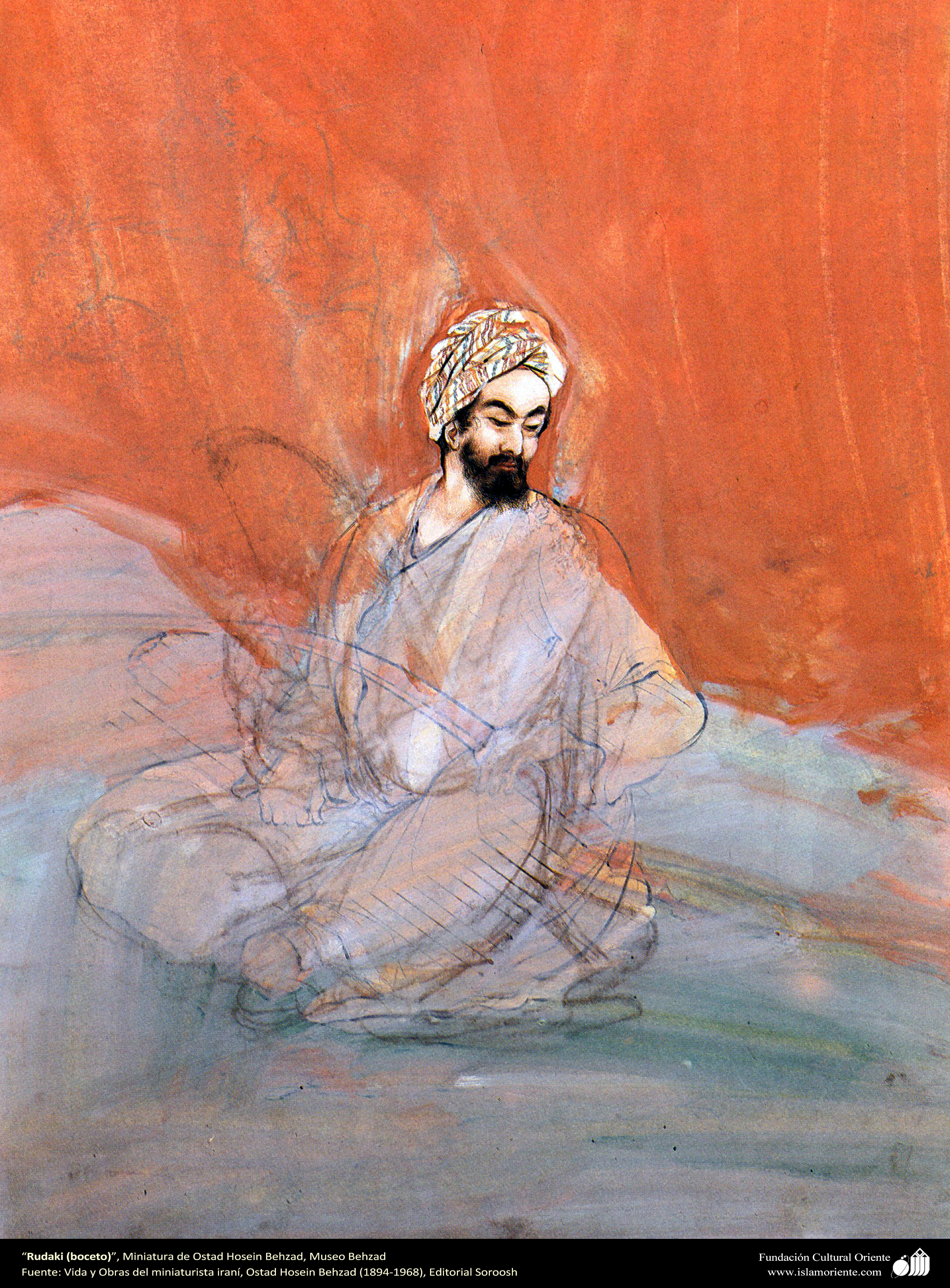
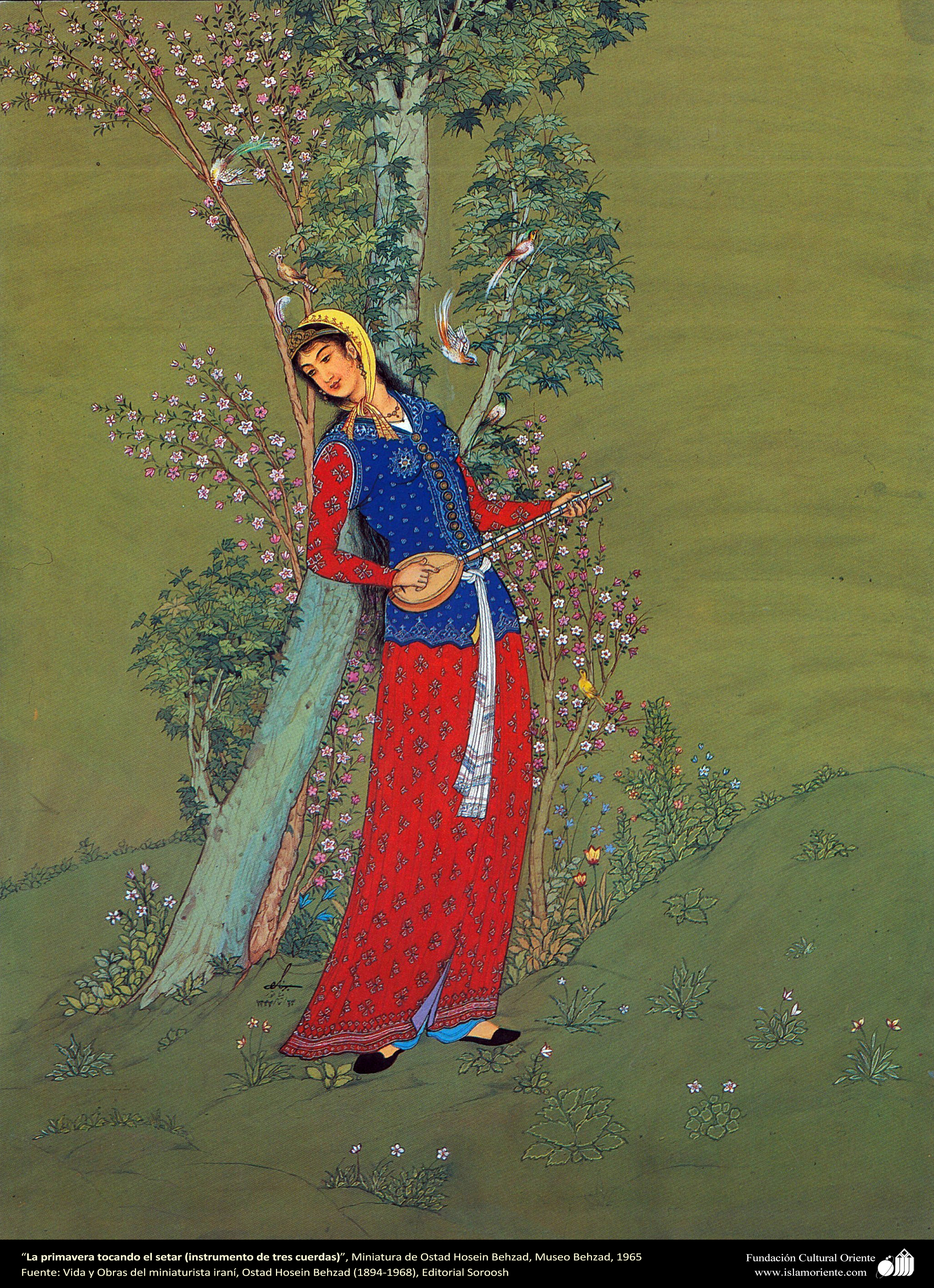
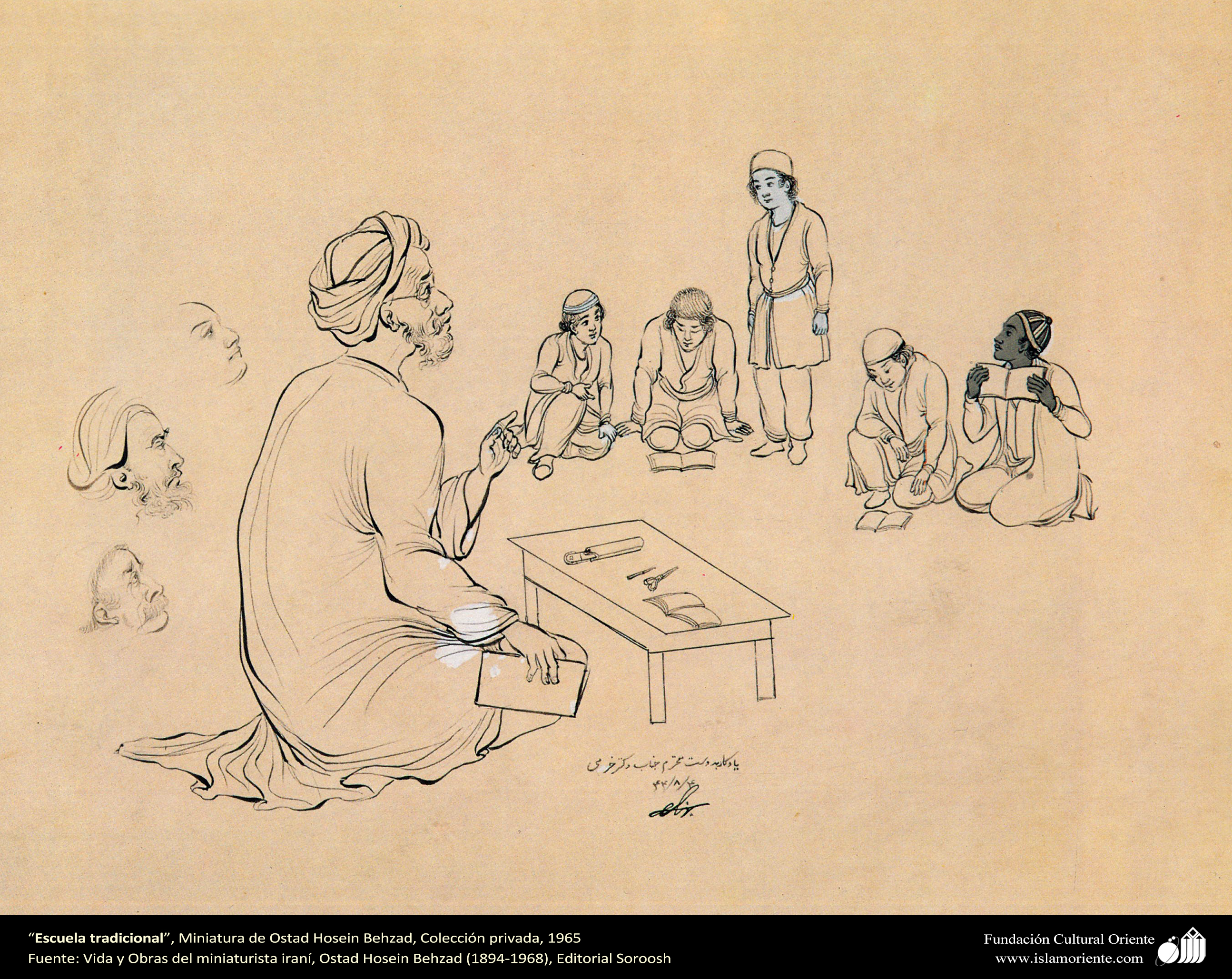
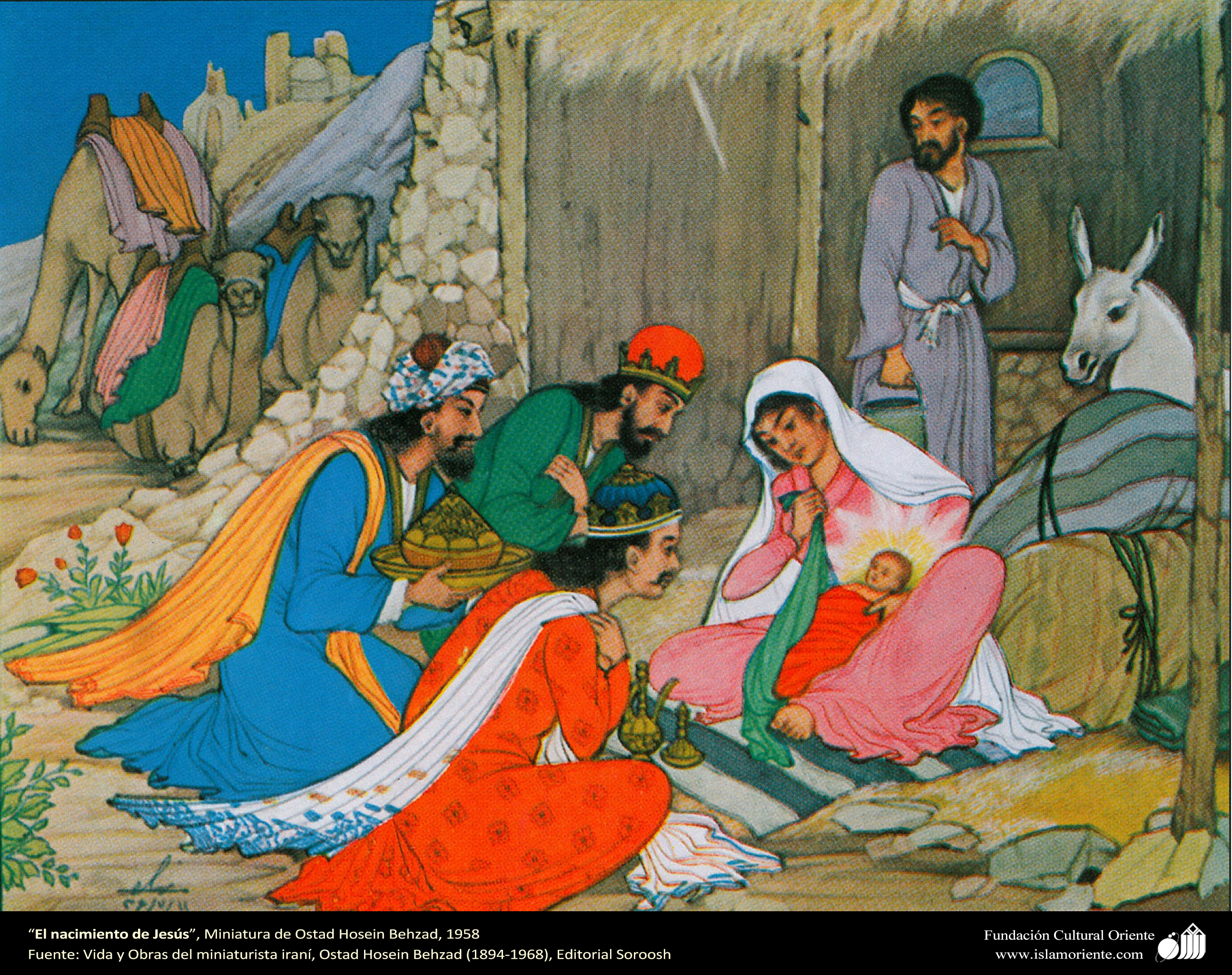

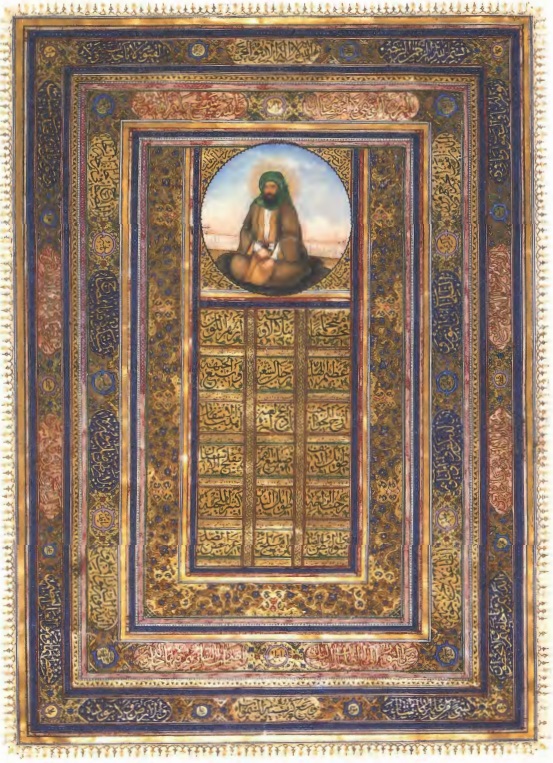
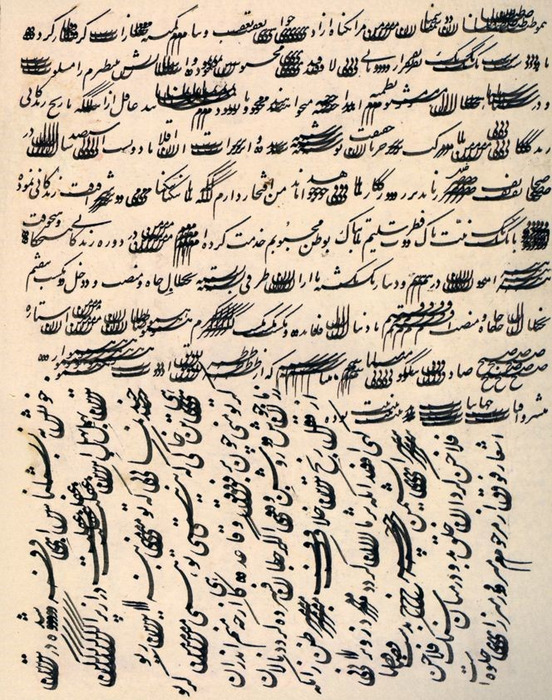
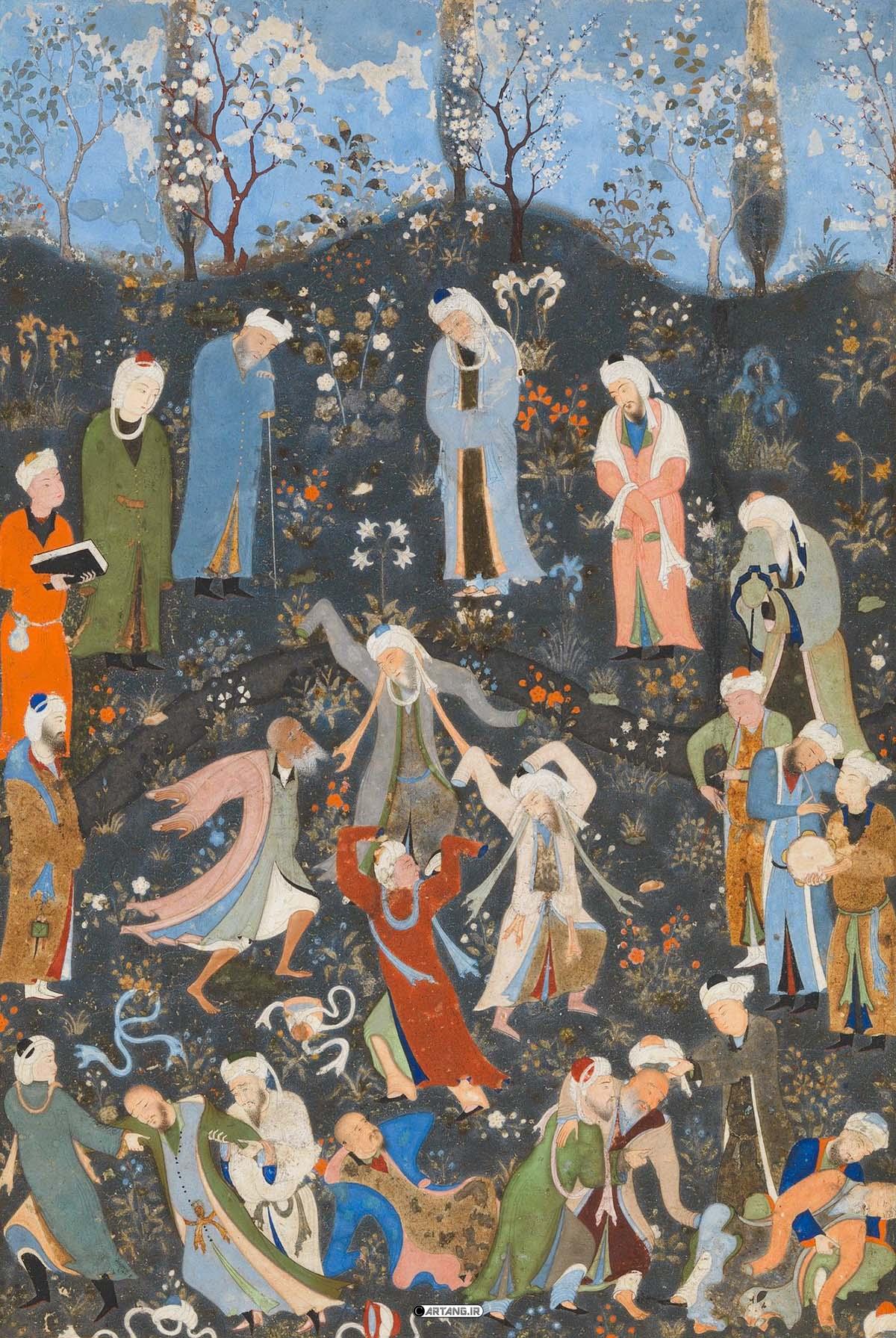
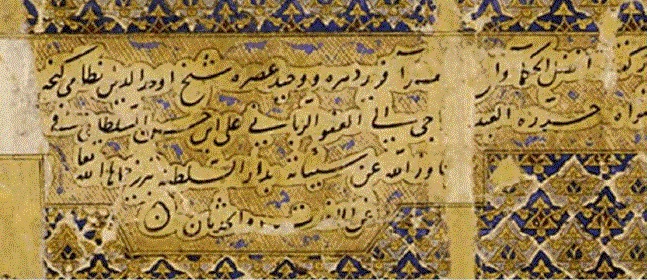
.jpg)
